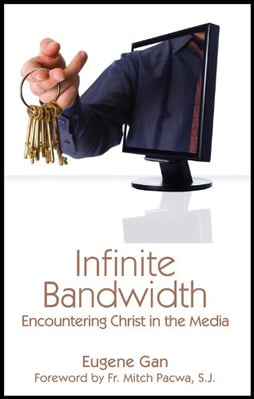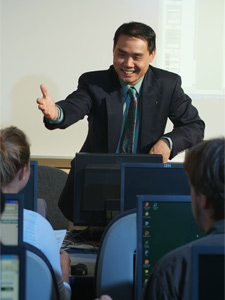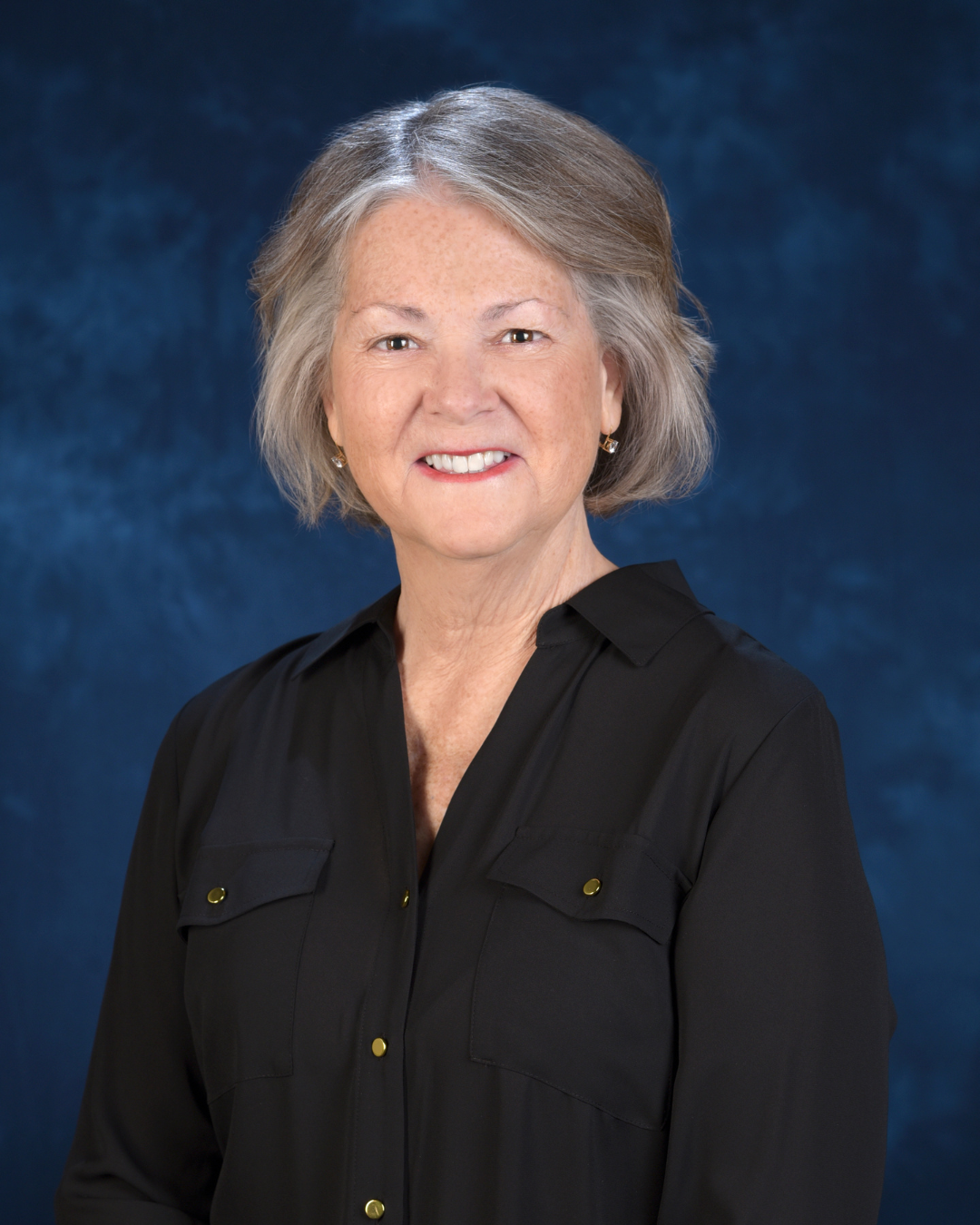 Today, I'm thrilled to share my recent conversation with Dr. Eugene Gan, Catholic dad, husband and Associate Professor of Communication Arts at Franciscan University of Steubenville. Dr. Gan joined me to discuss his groundbreaking new book Infinite Bandwidth: Encountering Christ in the Media. Please enjoy this conversation and consider a purchase of Dr. Gan's wonderful book.
Today, I'm thrilled to share my recent conversation with Dr. Eugene Gan, Catholic dad, husband and Associate Professor of Communication Arts at Franciscan University of Steubenville. Dr. Gan joined me to discuss his groundbreaking new book Infinite Bandwidth: Encountering Christ in the Media. Please enjoy this conversation and consider a purchase of Dr. Gan's wonderful book.
Q: Dr. Gan, congratulations on the publication of your book, Infinite Bandwidth: Encountering Christ in the Media. It was an honor and a joy to make your acquaintance recently at Franciscan University! Would you kindly introduce yourself and your family to our readers?
And what a joy it was to meet you too, Catholic Mom Lisa! Can I call you Mom? Well, I’m a professor at Franciscan University of Steubenville, teaching New Media as well as Fine Art – everything that I’ve been passionate about: graphic design, video game creation and programming, web design, post production special effects, 2D and 3D animations, as well as painting – and doing this with both traditional media like oils and acrylics on canvas as well as in the new digital realm with graphic tablets. All I can really say is that I’m very grateful to Our Father to not only have these gifts, but that he’s given me the opportunity to engage them at Franciscan University. My students are a blessing. My wife Cindy is a blessing too. And what a gift she is. For the record, I can’t do what I do without her doing what she does. Clearly, Our Lord, through Our Blessed Mother, brought us together. And our three sons John Paul, Maximilian Kolbe, and Benedict are gifts too. We tell them that as often as we can. I did say that we’re thanking Our Lord daily for his blessings, right?
 Q: As an Associate Professor of Communication Arts, your work puts you into direct contact with the latest in media technologies. What prompted you to write this book, at this time, and what do you hope readers will take away from their experience of reading the book?
Q: As an Associate Professor of Communication Arts, your work puts you into direct contact with the latest in media technologies. What prompted you to write this book, at this time, and what do you hope readers will take away from their experience of reading the book?
Frustration. It was frustration that prompted me to write the book. As a person who grew up passionate about both technology and fine art, and at a time when the only word for all this new media was “multi-media”, which at the time meant slideshow presentations, I was already passionately making a lot of the stuff we do with new media today. Then, as a professional working in the media industry and encountering a wide variety of clients and media projects, I yearned for solid direction that would guide a proper and wholesome use of the media. And as a father of three boys…well, need I say more on that? Boys and the media. And at this point in time, where we live, when it is impossible to escape some form of media cropping up in our daily lives. Shall we say I exhibited many of the typical parental concerns. I believe Our Father placed the passion within my heart, then led me to comb through Scripture with a media professional’s eye, and with Mom Church as my guide in her many documents on social communications, leading to the fruit which is the book that you now have. In other words, I discovered within the treasure of Scripture and the Church, the keys for leading today’s media-saturated culture. The book is the fruit of that labor of…passion. I sincerely hope that readers take with them the 7 media keys that Mother Church delineates and persevere in prayerfully and actively applying them in daily life.
Q: I love the format of the book, and your seven "media keys", each of which is presented with the support of Church teachings and documents. Please say a few words about how you struck upon the "keys" and why interacting with media in this context is particularly edifying for Catholic families.
Excellent and very astute observation! I think it takes a parent in the trenches to ask that. Here’s why: When I realized that reading the Church documents was like reading love letters from Mom (Church), I also realized that her kids – that’s you and I – weren’t really paying her enough attention. Sort of like our kids sometimes. As parents, my wife and I would repeatedly say to our boys: “stop jumping on the couch”, or “lean over your bowl when you’re eating,” or “quit hectoring your brother”. Saying something once just doesn’t seem to be enough, for some reason. Of course, realizing that it’s not just your kids who need these constant reminders helps. I realized that Mother Church was doing the same thing with us! In her documents - her love letters to us, as it were - I found themes that kept resurfacing. As I researched and reflected, I saw the pattern, which are the seven recurring themes or keys. Fr Mitch Pacwa thought I should call them St Peter’s 7 Media Keys, so the name stuck. And because these keys from the Church are grounded in Scripture and are really meant for us, her children, meant for our well-being and joy, they are particularly edifying for us when we put them into practice in our daily lives.
Q: For the Catholic families -- like yours -- who are struggling to make great viewing and listening choices with their children, what are some practical pointers to aid them in selecting quality experiences in the midst of so much harmful media being created today?
It really boils down to the 7 media keys that Mother church has already given us. When we make choices, whether with movies or video games, whether with online social networks or some new media yet-to-come, we can run through each of the keys – and for the sake of illustration, I’ll suggest some questions we might ask for each key with regard to online social networks (though with a little tweaking, they are easily applied to other media we use).
Balance – how balanced are we in our use of the media? Which point of view is the media coming to us with? How balanced are the viewpoints portrayed? How do I practice balance: interacting online, interacting in‐person, and managing my responsibilities?
Attitude – both our attitudes and how we’re modeling proper use of the media to our children as well as discerning the attitudes of the media creator or creators, their ideologies and worldview. For example, what is the attitude of the media’s creator/producer/director/
Personalism – how the community and the dignity of the human person, from conception to natural death, is upheld. Does it / Do I uphold human dignity? Does it / Do I promote individualism or support a communal spirit?
Truth-filled – how true, as opposed to merely how accurate, is the message being communicated. Is it truth‐filled as grounded in the Word of God? Am I representing myself authentically online?
Inspires – whether in spite of any evil or conflict, the media ultimately points us toward God, or at least toward that which is true, good, and beautiful. Does it / Do I inspire others to think and to ask questions? Does it / Do I inspire others to seek the truth?
Skillfully developed – this is generally the key most frequently focused on in mainstream media reviews and has to do with whether the media is creatively, skillfully, and artfully produced or communicated. But we must remember that this is only one of seven keys that Mom Church is asking us to look at and think about.
Motivated by and relevant to our experience – Are the ideas or the situations portrayed relevant to my experience? Does it engage or interest me? Do I use online social media to build bridges?
The beautiful thing about these keys is that they are usable with all media, including media that has not even been dreamt of yet, simply because these 7 media keys are grounded on who we are as human beings created in the image and likeness of God.
Q: In your work with students, you see the best and brightest of the *future* media creators, and truly the *current* heart of our Church. I know you are typically in the teaching role, but what have your students taught you about making effective and faith-filled decisions relating to media?
That all is not lost: there is hope for the new spring time of faith!
I enjoy thinking outside the box: if we want to see change and improvement, then it doesn’t make sense to keep doing things a certain way and expect new improvements to magically emerge. I challenge my students to think in new ways with new media. I strive to give them a lot of space and freedom to play and try new methods and new ways of expressing truth, goodness, and beauty with the new media. I even tell them in as alarming a way as possible that I don’t intend to prepare them for graduation as much as I hope to prepare them for what happens after graduation. And when they take this to heart, the results are exhilarating and rewarding! I see their creativity flourish and it teaches and reminds me that our faith can find its expression in as many unique ways as we are uniquely made!
And another thing I’ve experienced and learned from them: I’m convinced that we needn’t worry too much about the church using new media. This will happen, if my students’ practices are anything to go by. The priests, bishops, religious, and laity of the future will be comfortable using new media. Certainly we should encourage our brothers and sisters in Christ to be using the new media today, but I’m confident that this will soon become the norm. The concern I have is more about forming our young – and us – today in the proper, healthy worldview for media. That’s why the catechetical framework of the church’s 7 media keys is so important.
Q: In light of the recent CARA study on Catholic Media Use in the United States what role does the Church have in aiding Catholic families in discovering and embracing great media? How can individuals who are working in the New Evangelization using social media overcome the obstacles discussed in this study?
From the many social communications documents that Mother Church has promulgated, I believe she’s been right there all along, leading and guiding us. I think it’s her kids – us – who have been slow to respond. As Mom, through the “love letters” of her magisterial documents, she been giving us guidance, been condemning abuse, and commending great media. If we listen carefully, we’ll recognize her support and prayers.
As for the CARA study, in a certain way, the findings should come as no surprise. The changing face of media use reflects changes in our media culture, and consequently, changes in the way we communicate. Earlier, I suggested some guiding questions for online social media, grounded on the 7 media keys that Mother Church has proclaimed “officially” since her first document in 1936. That’s why I argue that Mom wasn’t slow to see media as gift of God. It’s her kids who have been tardy about listening and doing something about it.
The good news is that with careful study and learning to understand both the possibilities and limitations of the various media forms, we can use these gifts in powerful and authentic ways. I’ve no doubt that we will use online social media effectively if we put in the effort to learn about them and play with the possibilities. For example, the CARA study reports that “ironically, it is the ease with which these new media resources became available that has led to lower attention” and correspondingly low readership of online diocesan or parish websites and publications. Yet, at the same time, the study reports: “despite what conventional wisdom or anecdote may suggest, Millennials do not overwhelmingly prefer reading content online compared to print…. what can be concluded is that creating content in new media does not mean people will use it. The era of broadcasting is over. In a narrowcasted world, people have to be aware of and want to visit and use your content. The signs from the research suggest that too few Catholics are aware of and using the religious new media resources that have been developed.” One thing that jumped immediately to mind is how connected we are to one another. We learn of something good and desire to share that good with those we care about, our friends, and family. That’s a powerful property of online social media – a means to inform, inspire, and build bridges. Broadcasts still have their place, but the increasing prevalence of narrowcasting means that communication will cease unless we share and pass along the good. It also means that to reach different circles of people, individuals who are working in the New Evangelization using social media must be present to a wide variety of narrowcast groups. That’s the 5th and 7th media key in action. Mom Church knew that all along.
Q: How do you hope that Infinite Bandwidth: Encountering Christ in the Media will be used by individuals, groups and the Church and how does the format lend to group reading experiences and study?
Did you know that Mother Church asks us to reflect on our use of media in our daily lives – as individuals, families, and as communities? She does this every year when she celebrates World Communications Day in May, on the Sunday before Pentecost (think of the significance of that!) World Communications Day is meant to be a day of prayer and reflection about the media in our lives. The message itself is released on January 24, the Feast of Saint Francis de Sales, to give sufficient time for all of us to prepare. It’s in this same spirit that I encourage individuals, families, and groups to read and reflect. The book is great as a tool and guide for us to do this in a systematic way with the mind of the Church and of Scripture. In fact, the format of each chapter of the book includes not just descriptions, but also a wide variety of examples to illustrate the meaning of each of the seven keys. Ultimately, because we’re all unique and as way to personalize these keys in one’s life, I hope that readers, with the help of the examples provided in the book, will bring to mind their own examples of media that they’ve experienced and that impact them. Each chapter also ties the keys with prayer for the virtues, grounded in the Catechism.
Additionally, the inclusion of concrete ways to research media before consuming them, practical steps to integrating the keys in our daily lives, suggestions for “passing it on” and forming our children and charges, as well as sets of guiding questions for various media should directly help with personal reflection, enhance group discussion experiences, and support catechetical formation efforts. Individuals coming together as a group in a parish or family members gathering together to talk about the media examples in their lives, taking one chapter and key at a time, can raise awareness about whether we’re consuming and making media in healthy ways. The format for coming together for a group read can be similar to what we might do when we gather together to read Scripture or the Catechism.
Q: Dr. Gan, again, congratulations on a wonderful book and best wishes for the important work you do each day to inspire and educate students. Are there any closing thoughts you'd like to share with our readers?
Thank you Lisa! I’d say to first pray for the understanding of what it means when Mother Church calls media “gifts of God” and “marvelous things”. Then pray for harvesters in the field of media. Pray that we learn about and practice the media keys that Mother Church has provided. And as we teach and prepare our children for life as adults, so too must we teach our children to use and make media powerfully and authentically in healthy ways. Then, on this foundation, work to build roads – like what you’re doing Lisa – to reach others. So that, with the roads built on the firm foundation of the Church’s 7 Media Keys, we can invite others back to authentic faith in Jesus Christ. After all, it is Our Lord Himself who communicates God’s love to us, and we can do no less than to strive to be like Him.
About the Author

Lisa M. Hendey
Lisa M. Hendey is the founder of CatholicMom.com, a bestselling author and an international speaker. A frequent radio and television guest, Hendey travels internationally giving workshops on faith, family, and communications. Visit Lisa at LisaHendey.com, on her Substack at LisaHendey.Substack.com, or on social media @LisaHendey for information on her speaking schedule or to invite her to visit your group, parish, school or organization. Find Lisa’s books on her Amazon author page.


.png?width=1806&height=731&name=CatholicMom_hcfm_logo1_pos_871c_2728c%20(002).png)
Comments